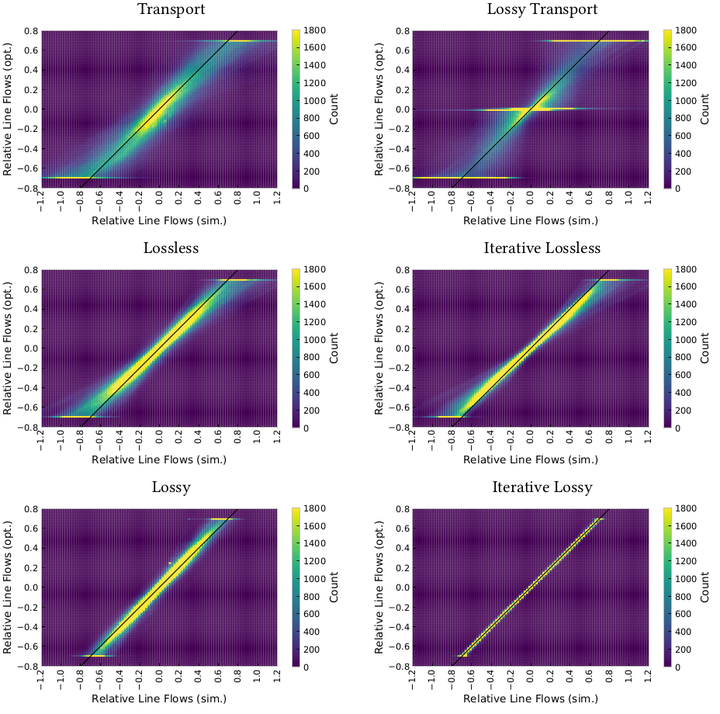Approximating Power Flow and Transmission Losses in Coordinated Capacity Expansion Problems

With rising shares of renewables and the need to properly assess trade-offs between transmission, storage and sectoral integration as balancing options, building a bridge between energy system models and detailed power flow studies becomes increasingly important, but is computationally challenging.
We compare approximations for two nonlinear phenomena, power flow and transmission losses, in linear capacity expansion problems that co-optimise investments in generation, storage and transmission infrastructure. We evaluate different flow representations discussing differences in investment decisions, nodal prices, the deviation of optimised flows and losses from simulated AC power flows, and the computational performance. By using the open European power system model PyPSA-Eur we obtain detailed and reproducible results aiming at facilitating the selection of a suitable power flow model.
Given the differences in complexity, the optimal choice depends on the application, the user’s available computational resources, and the level of spatial detail considered. Although the commonly used transport model can already identify key features of a cost-efficient system while being computationally performant, deficiencies under high loading conditions arise due to the lack of a physical grid representation. Moreover, disregarding transmission losses overestimates optimal grid expansion by 20%. Adding a convex relaxation of quadratic losses with two or three tangents to the linearised power flow equations and accounting for changing line impedances as the network is reinforced suffices to represent power flows and losses adequately in design studies. We show that the obtained investment and dispatch decisions are then sufficiently physical to be used in more detailed nonlinear simulations of AC power flow in order to better assess their technical feasibility.